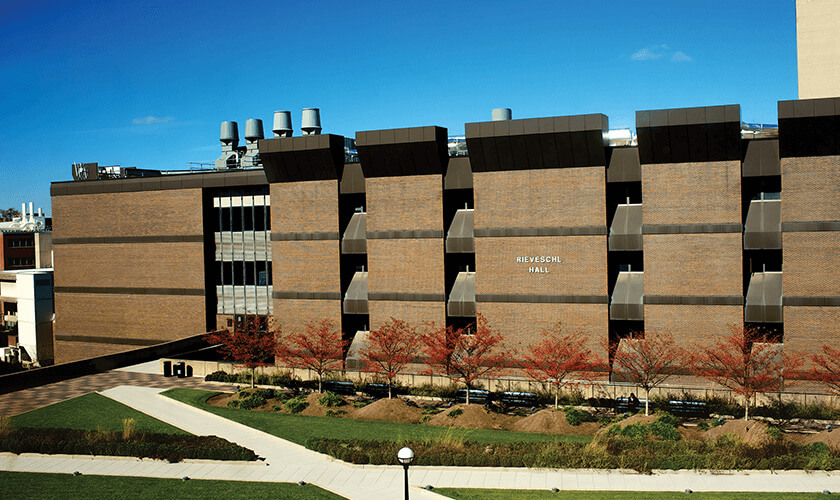Project Profile: George R. Rieveschl Hall, University of Cincinnati

The Challenge
• Install a laboratory exhaust system that effectively exhausts laboratory fumes out of the building and away from nearby homes and dormitories
• Select and install a laboratory exhaust system that minimizes energy usage
Ranked as one of America's top public research universities, the University of Cincinnati has an enrollment of more than 42,000 students. Many of the university's biology and chemistry students, as well as faculty are engaged in important research projects. They spend a considerable amount of time in Rieveschl Hall, an eight-story science research and resource center. Rieveschl Hall was built in 1969 and has undergone extensive renovations to improve energy efficiency and functionality since 2009.
Prior renovations of laboratory ventilation systems (including Greenheck Vektor energy recovery laboratory exhaust systems) as well as upgrades to utilities, mechanical, electrical, plumbing and lighting systems at Rieveschl Hall and other campus buildings have reduced energy use by up to 70 percent and are saving the university up to $500,000 annually.
In 2011, the University began upgrading its laboratory exhaust ventilation system on the sixth and seventh floors of Rieveschl Hall and completed that project in the spring of 2012. The newly renovated organic laboratories feature multiple ventilated fume hoods that limit users' exposure to hazardous material and allow students and researchers to conduct experiments in a safer laboratory environment similar to organic chemistry laboratories in the chemical industry.
Greenheck’s Solution
• Two Vektor®-HS-22
Two Greenheck Vektor®-HS demand-based laboratory exhaust systems, with the capacity to move approximately 8,000 cfm, were selected for this project due to their reliable air performance and their ability to reduce energy costs.
Greenheck’s Vektor-HS is capable of reducing energy costs in demand-based laboratory exhaust systems by over 60%. When airflow demand decreases during non-peak periods of laboratory usage, Greenheck’s Sure-Aire™ Variable Volume Exhaust (SAVVE) technology maintains a constant duct static pressure by reducing the fan speed with a variable frequency drive. As airflow through the fan varies, a unique, variable area outlet nozzle automatically adjusts to maintain a constant and safe discharge velocity. (ANSI Z9.5 requires a minimum 3,000 ft./min.) As a result, fan speed and energy usage are reduced for quieter, more economical operation.
All controls in the new Vektor-HS are pre-packaged at the factory for easy installation. In addition, Greenheck’s Vektor series of laboratory exhaust products are low profile, small footprint, self-contained units constructed of heavy gauge, corrosion resistant coated steel. They also do not require guy wires.
They’re ideal for replacing older fans with taller stacks that consumed more energy, delivered unreliable performance, were much more expensive to install, and required guy wires on the roof to prevent being toppled by high winds.
The Results
The Greenheck Vektor-HS laboratory exhaust systems installed at the University of Cincinnati are expected to significantly reduce energy costs when compared to more traditional variable volume laboratory exhaust systems that utilize bypass air dampers.
Consulting engineer Tom Crompton, director of mechanical engineering at Fosdick and Hilmer, specified the Greenheck Vektor-HS laboratory exhaust systems based on their potential to reduce energy costs. “It was really good news when Greenheck introduced this product,” Crompton said. “The Vektor-HS has very good payback potential, and it’s ideal for a university laboratory environment where occupancy goes from max to zero every day and you need to be able to control the variable volume exhaust. The installation went very well.”
In addition to reducing energy costs due to its ability to maintain constant pressure at lower fan speeds, the Vektor-HS system operates much quieter during off-peak demand. This is especially advantageous to other tenants who occupy Rieveschl Hall’s library, classroom and office facilities.




